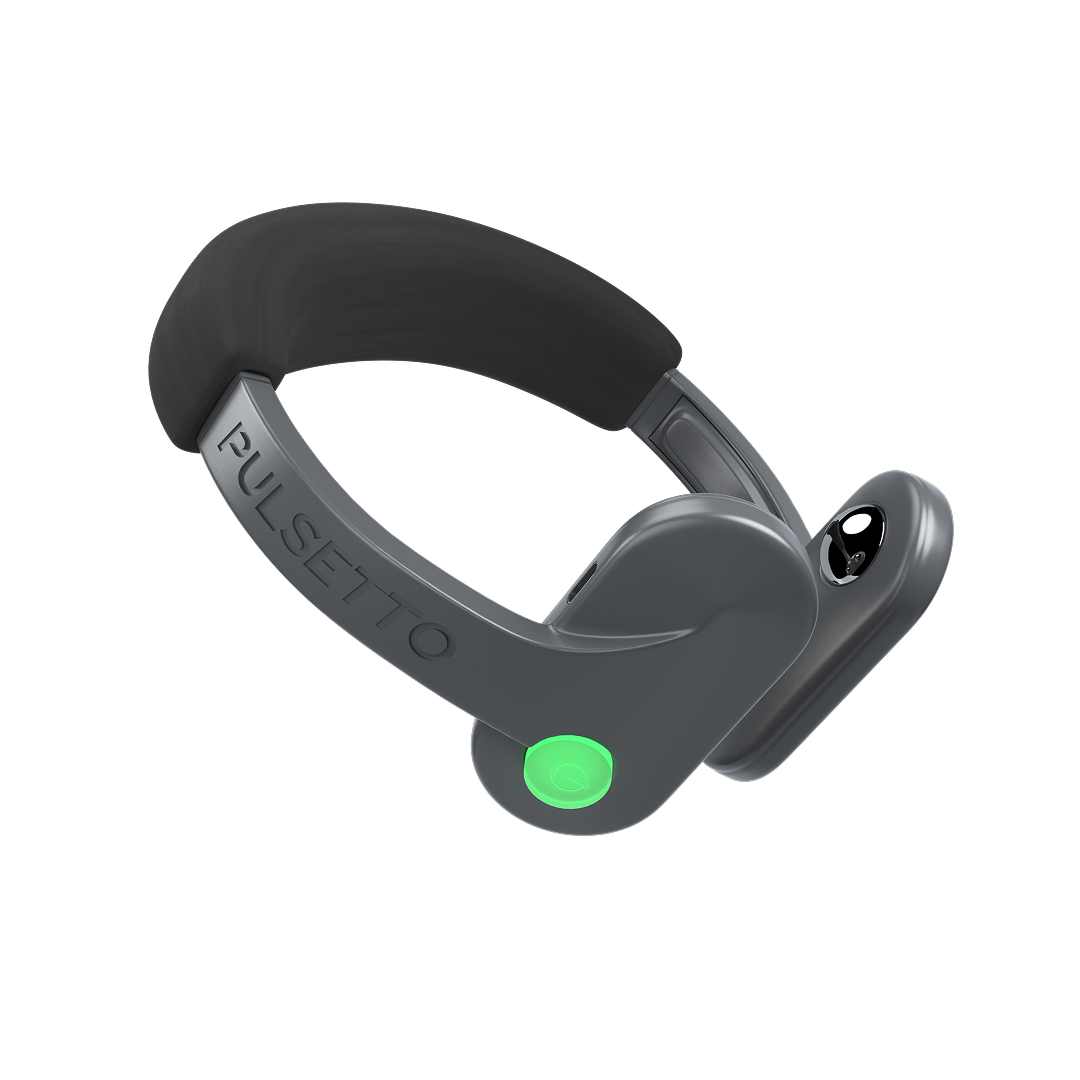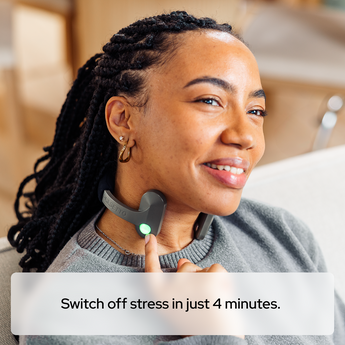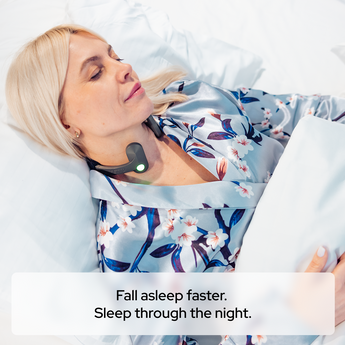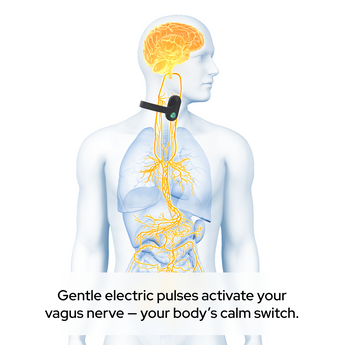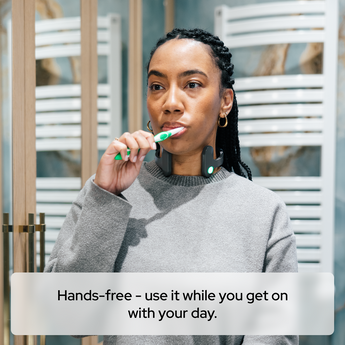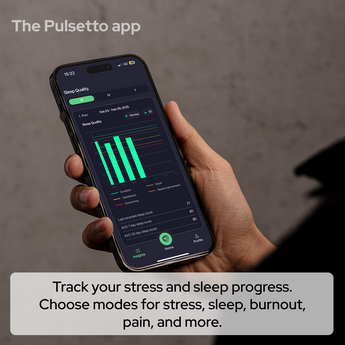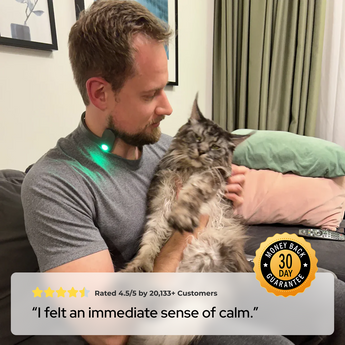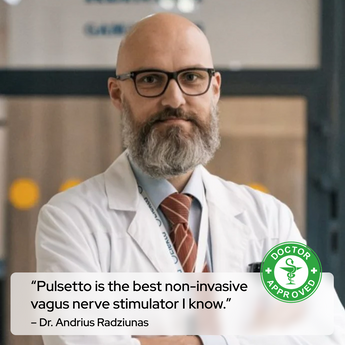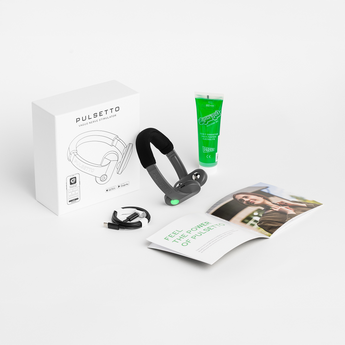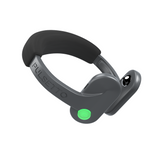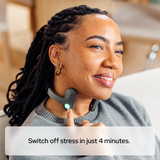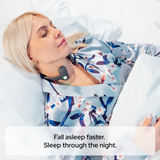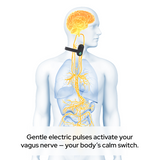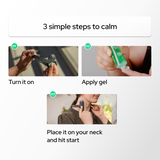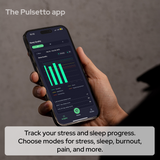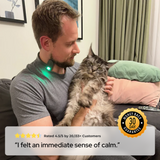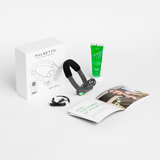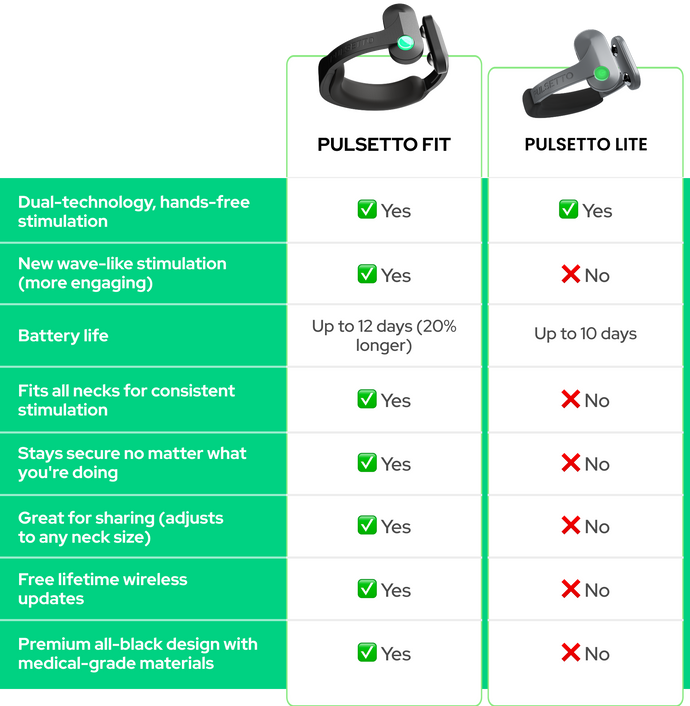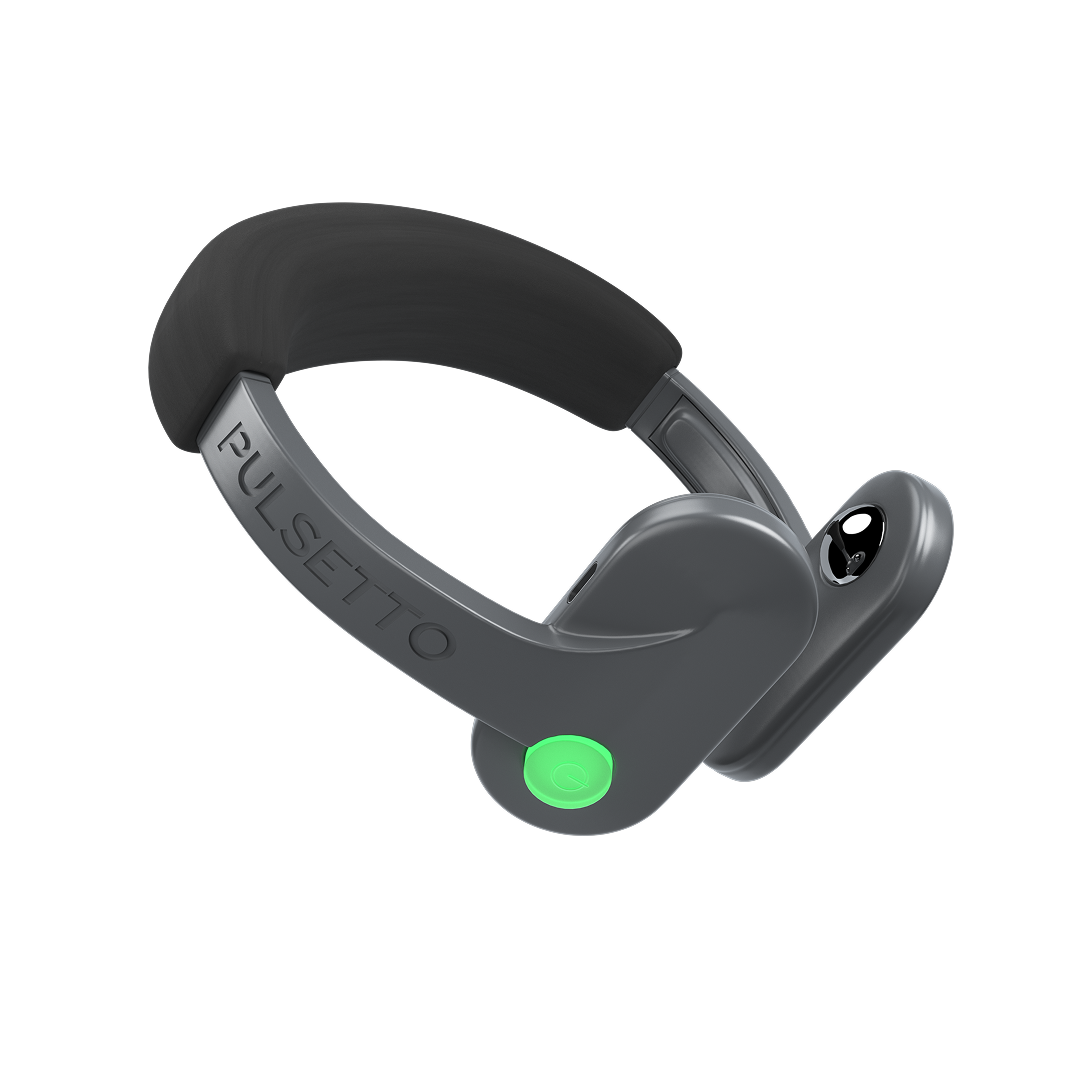Do Vagus Nerve Exercises & Non-Invasive Treatment Solve Weight Loss?
When it comes to weight loss, there's no silver bullet. However, incorporating vagus nerve exercises and non-invasive treatments into your routine might offer a surprising boost to your efforts - you might be able to enhance your body's natural weight regulation processes.
Effective Vagus Nerve Exercises
Believe it or not, you can exercise your vagus nerve just like a muscle. Here are some simple, yet effective exercises that can help stimulate your vagus nerve:
-
Deep Breathing: Slow, deep breaths calm the nervous system and increase vagal tone.
-
Gargling: A daily gargle with water will activate the vagus nerve.
-
Singing or Humming: These activities stimulate the vagus nerve because it's connected to your vocal cords.
These exercises are easy to do - and they offer the added benefit of relaxation, which in itself can be beneficial for weight loss. Stress is a known factor in weight gain, so anything that helps reduce stress can indirectly help with managing your weight.

Slow, deep breaths can calm the nerves and improve vagal tone.
Exploring Non-Invasive Vagus Nerve Treatments
Beyond exercises, there are non-invasive treatments available that target the vagus nerve. These include:
-
Transcutaneous Vagus Nerve Stimulation (tVNS): This involves using a device such as Pulsetto to deliver electrical stimulation to the vagus nerve through the skin.
-
Acupuncture: Certain acupuncture points are believed to stimulate the vagus nerve.
-
Biofeedback: This therapy uses sensors to help you learn to control your body's functions, potentially improving vagal tone.
These treatments are gaining popularity as more people look for alternative ways to improve their health and manage their weight. They offer a promising addition to traditional weight loss methods like diet and exercise.
Comparing Results: Exercises vs. Non-Invasive Solutions
While exercises are free and can be done anywhere, anytime, non-invasive treatments often require specialized equipment or the help of a professional. However, both methods aim to improve vagal tone, which can help regulate appetite and metabolism.
The key is consistency - whether you choose exercises, non-invasive treatments, or a combination of both, sticking with them over time will lead to the best results. And remember, these methods should complement, not replace, a healthy diet and regular physical activity.
How Does Vagus Nerve Stimulation Help with Weight Loss?
VNS helps with weight loss by influencing the brain-gut axis, which is responsible for signaling hunger and fullness. By modulating this communication, VNS can reduce appetite, increase satiety, and even affect the way your body processes and stores fat.
Research suggests that VNS alters the production of neurotransmitters like serotonin and norepinephrine, which play a role in mood and appetite regulation. Moreover, it has been shown to impact the metabolism of glucose and fats, potentially leading to more effective weight management.
While the exact mechanisms are still being studied, the evidence points towards VNS being a valuable tool in the fight against obesity and related health issues.

Vagus nerve stimulation (VNS) aids in weight loss by affecting how your brain and gut communicate about hunger and fullness.
Pulsetto: Vagus Nerve Stimulator for Weight Loss
Pulsetto Fit: Wellness, Upgraded

Description (Pulsetto Fit):
Key Features of Pulsetto Fit
-
Custom Fit: Comes with two removable magnetic paddings for different neck sizes, ensuring a snug, comfortable fit.
-
New Pulsating Mode: A rhythmic, wave-like stimulation that syncs with your breath for deeper nervous system relaxation.
-
20% Longer Battery Life: Offers about 1.2 weeks of daily use per charge.
-
Enhanced Durability: Reinforced materials make it built to last through daily wear.
-
Same Great App: Includes the same 5 programs and 30-day Premium trial as Lite, with identical sound library and add-ons.
-
What’s Included: Device, two paddings, 60g gel tube, USB-C cable, user guide.
-
Safety: FCC-certified, same ULRE tech as Lite. Consult a doctor if you have implantable devices.
→ Shop Pulsetto FIT
Pulsetto - Your Peace & Better Sleep Partner
The Science Behind Vagus Nerve Stimulation

Pulsetto is a wearable device that uses vagus nerve stimulation (VNS) to promote relaxation and reduce stress and anxiety. By targeting the vagus nerve with gentle electrical impulses, Pulsetto can help induce a state of calm, making it easier to fall asleep and stay asleep.
Advantages of Pulsetto:
-
Stress Reduction: Experience significant relief from daily stress by activating your vagus nerve and shifting your body into a "rest and digest" state.
-
Improved Sleep: Pulsetto supports restful sleep by calming your nervous system, helping you wake up refreshed and energized.
-
Enhanced Mental Clarity: By promoting relaxation, Pulsetto aids in sharpening focus and reducing brain fog.
-
Boosted Heart Rate Variability (HRV): This device helps improve HRV, an important marker of heart health and resilience to stress.
-
Digestive Health Support: Vagus nerve stimulation positively impacts the gut-brain connection, aiding digestion and reducing bloating.
-
Chronic Health Support: Pulsetto offers support for individuals managing chronic stress, anxiety, and fatigue, helping to improve their quality of life.
What's Included:
How Pulsetto Works:
Using Pulsetto is simple and takes just 4 minutes to start feeling the effects. Here's how it works:
-
Apply a generous amount of gel to your neck or directly onto the electrodes.
-
Place the device on your neck.
-
Pair it with the Pulsetto app on your smartphone.
-
Choose your desired program and start the device through the app.
The device creates a gentle, pleasant vibration or tingling sensation in your neck area. This stimulation helps activate your parasympathetic nervous system, leading to a calmer, less stressed state.
→ Shop Pulsetto
FAQ:
Q1) Does vagus nerve stimulation (VNS) actually help with weight loss?
Yes, by shifting your body toward parasympathetic dominance (rest-and-digest), VNS may support satiety signaling, glucose control, and inflammation balance that collectively impact body weight. Start with the dedicated explainer: Vagus nerve stimulation for weight loss , do exercises & non-invasive treatment work?. For fundamentals, see Vagus nerve: anatomy & core functions and the VNS Ultimate Guide, plus Non-invasive VNS explained and Benefits of non-invasive VNS devices.
Q2) How would VNS physiologically influence weight?
VNS can modulate appetite, gut-brain signaling, insulin sensitivity, and stress hormones. See Vagus nerve & human health and Why we should care about HRV (HRV is a practical proxy for vagal tone). Because weight and inflammation are linked, review Ultimate guide: reducing inflammation and 10 strategies to combat body inflammation.
Q3) Do vagus-nerve exercises work for weight loss? Which ones?
They can help by improving vagal tone and stress recovery (which affects cravings and metabolic balance). Try routines from Mastering parasympathetic activation, How to activate the parasympathetic nervous system, The art of nervous-system calming, Science-backed methods for nervous-system regulation, and Vagus nerve massage: how to do it at home.
Q4) What about non-invasive devices, are they effective and safe?
Non-invasive VNS can provide repeatable stimulation to support the above mechanisms. Read Non-invasive VNS explained and Benefits of non-invasive VNS devices. For product use and safety: Is Pulsetto safe?, Has Pulsetto been tested?, Is Pulsetto a medical device?, and Contraindications?
Q5) How does the gut microbiome fit into vagal tone and weight?
The gut-brain axis communicates via the vagus nerve; improving gut health can support weight goals and vagal signaling. See How to improve gut health, Biohacking your microbiome, Top 10 proven benefits of probiotics, Prebiotics vs probiotics, Best time to take probiotics, and 2025 picks: Best probiotic supplements, for women, for men.
Q6) Can stress management via VNS help prevent overeating?
Absolutely, stress spikes can drive cravings and dysregulated eating. Explore Biohacking stress, Tips for instant stress relief, Ultimate stress-relief protocol, and The vagus nerve: your secret weapon in fighting stress. For anxiety-related eating, see Non-invasive methods to ease anxiety and Best biohacks for anxiety relief.
Q7) How long until I notice weight-related changes from VNS?
Timelines vary (weeks to months). Track progress with HRV (better vagal tone) and sleep improvements: Why HRV matters, What is a good HRV score?, and practical HRV improvement guides for popular trackers (e.g., Oura, WHOOP, Apple Watch).
Q8) What’s the best daily routine that combines VNS and lifestyle for fat loss?
Aim for: (1) Non-invasive VNS sessions (per your device’s program), (2) parasympathetic priming via breathwork/cold exposure/humming (Mastering parasympathetic activation), (3) sleep optimization (Role of sleep in biohacking, Importance of wind-down), (4) gut-supportive nutrition (Microbiome guide; Probiotics, best time). If you need a template, see Build a relaxing evening routine.
Q9) Are there risks or people who shouldn’t use VNS?
Yes, always check Contraindications, Is Pulsetto safe?, and Has it been tested?. If you have implanted devices, certain heart conditions, are pregnant, or have seizure history, consult a clinician first.
Q10) Which VNS program should I use for weight-loss support?
Program choice depends on your primary driver (stress eating, poor sleep, gut issues). Use What program should I use for my condition? and Differences between programs. New users: Quick-start guide, What’s included, and What does each light mean?.
Q11) How often should I use non-invasive VNS?
Check device guidance: How often can I use Pulsetto? and How many programs a day can I use?. If discomfort occurs, review Is it normal to feel pain during some programs? and How do I charge the device?.
Q12) Can better sleep via VNS indirectly reduce weight?
Yes, sleep restriction pushes hunger hormones and cravings up. See Role of sleep in biohacking, Sleep program science, and habits: Importance of wind-down, Are you missing deep sleep?.
Q13) I’m primarily struggling with cravings when stressed. Where should I begin?
Combine stress-targeted VNS with immediate relief tools: Tips for instant anxiety relief, Best ways to reduce anxiety, and Relaxation improves focus & productivity. For a structured path: Ultimate stress-relief protocol.
Q14) Any evidence-aligned adjuncts I can stack with VNS?
Consider microbiome support (Top probiotic benefits, Best time to take them), circadian-friendly sleep routines (Role of sleep), and an anti-inflammatory lifestyle (Ultimate guide to reducing inflammation). Track changes with HRV: Why HRV matters and HRV charts by age/gender.
Q15) Where can I learn more about VNS beyond weight loss?
Explore condition-specific guides such as Stress, Anxiety, Gut health, and Chronic pain, plus broader explainers: Unlocking the vagus nerve (comprehensive guide) and Neuromodulation & sleep.




